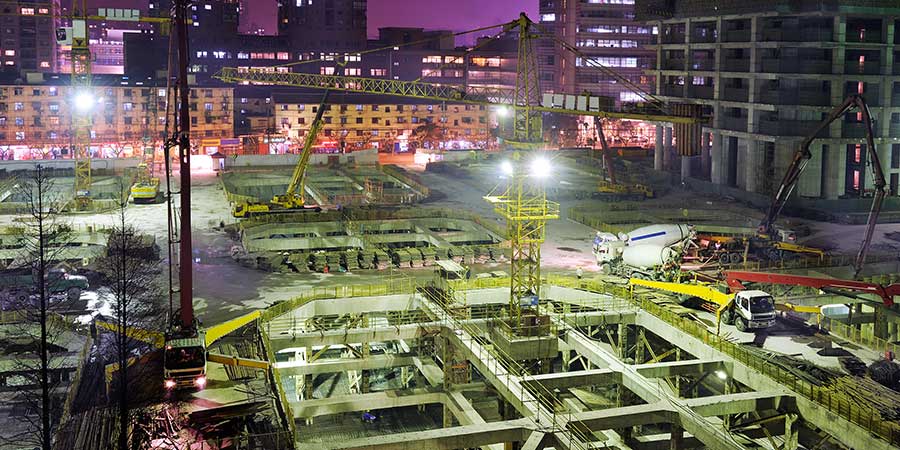
With space at a premium in many urban areas, developers are digging deeper foundations to increase the square footage of residential, commercial, and mixed-use building projects. In Dubai for example, a new luxury retail and work space is being built that includes a basement that’s seven levels deep. The lack of parking space in many cities is spurring developers to build multi-level car parks below ground. In other cases, a deep foundation may be needed due to large design loads or poor soil at shallow depths.
Digging deeper foundations has many advantages but also brings about many challenges that need to be addressed at the design phase.
Soil pressure. There are tremendous external pressures on a deep construction hole. Typically, this requires horizontal piles to be drilled into the sides of the hole to shore them up and keep soil from falling in. High strength rock anchors are then drilled into sound bedrock and then connected to the structure to help the structure resist uplift forces.
Hydrostatic pressure. If the soil around the foundation is saturated with water, this places immense hydrostatic pressure against the foundation. All of this pressure means that water will push its way through the foundation, even through miniscule cracks. Where local hydrology allows, drainage systems can redirect some of the water away from the foundation, but they are generally not enough protection for finished basement space. A fully adhesive bonded, pre-applied waterproofing membrane offers the highest degree of protection in these circumstances. By creating an integral bond with the poured concrete, the waterproofing barrier prevents water ingress, even at high hydrostatic pressure.
Dewatering. In most cases once you dig 5-10 meters down, you hit water. This means you’ll need continual dewatering to keep the site dry enough to construct the foundation. Dewatering involves running pumps 24x7, which is very expensive. The contractor will want to accelerate project completion to minimize these costs. Choosing building materials that are simple to install will be beneficial, because it enables the contractor to get the concrete poured and the basement finished faster, helping to save them money. Some solutions like PREPRUFE® Plus pre-applied waterproofing membranes can even be placed in damp conditions, helping to accelerate project completion.
Corrosive ground water. Digging deeper increases the chance of exposure to groundwater, which can have high concentrations of chlorides and sulfates in some regions. These conditions are highly corrosive to concrete. The structure can be protected from corrosion by using a waterproofing barrier that is resistant to aggressive soil/water conditions.
Learn more about PREPRUFE® Plus waterproofing membrane
Related articles
May 28, 2018
Pre-applied Waterproofing: Understanding concrete bonding methods
Pre-applied waterproofing is used below basement slabs and behind walls on job sites where there is limited space for excavation and heavy equipment. Instead of pouring the foundation and then applyin...
READ MOREJune 07, 2018
Waterproof tanking techniques
Tanking – also referred to as below grade waterproofing – involves the application of a waterproofing barrier to the walls, the base slab and in some cases to the roof of the below grade structure. Th...
READ MOREMay 14, 2018
Specifying below grade waterproofing
Waterproofing basements and other below grade spaces takes special considerations. Here are five points to consider when specifying waterproofing for these spaces. Investigate the water table l...
READ MOREApril 03, 2018
Providing mission-critical waterproofing
Many structures need to be waterproofed to protect against deterioration, but what if you have a building that needs to be kept very dry? How do you safeguard critical property and assets from water i...
READ MOREApril 03, 2018
Waterproofing mass transit systems
Water and moisture intrusion can cause significant damage to mass transit systems, resulting in high replacement costs, lost revenue, and serious disruption in travel. Underground stations require a d...
READ MORETags
- PREPRUFE
- PREPRUFE PLUS
- Waterproofing